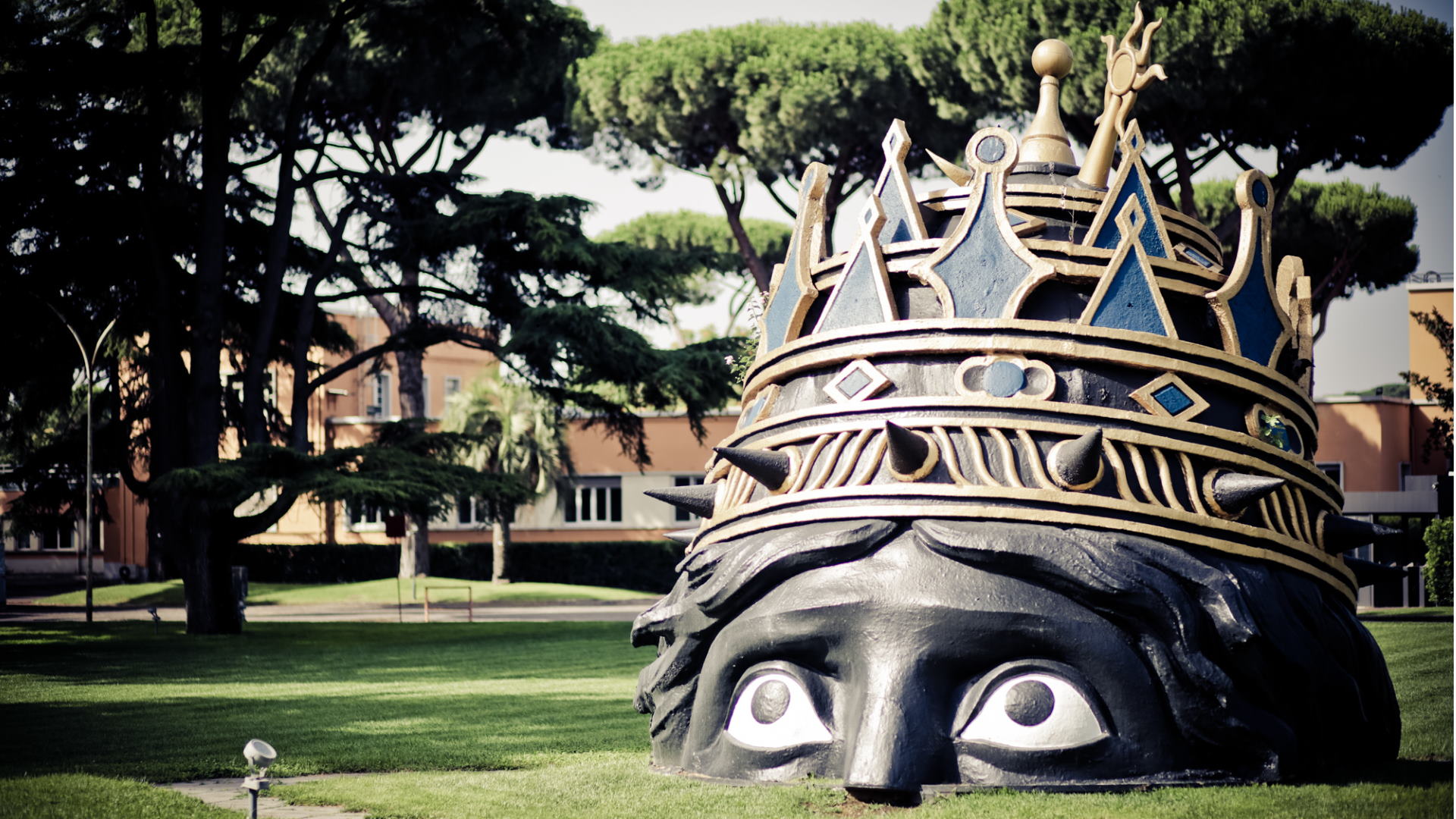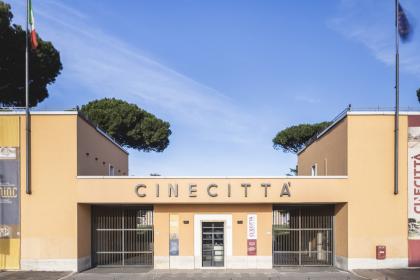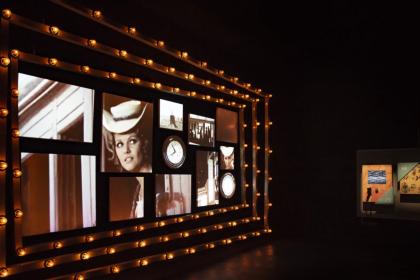
Italy’s temple of cinema since 1937, the year of its foundation, Cinecittà is both an active production and creation hub and an exhibition-museum structure that has been expanding continuously since 2011. On entering through the original Rationalist entrance on Via Tuscolana, visitors continue into the Studios’ green parkland to be greeted by scenic elements that include the Rocking Horse from Pinocchio and the mysterious head of Venusia, created for Federico Fellini's 1976 film Casanova. The museum experience includes visits to the exhibition routes of Cinecittà Shows Off and MIAC - Italian Museum of Moving Images.
Four interactive exhibition routes situated in the original buildings tell the story of Cinecittà Studios and Italian and international cinema: “Shooting at Cinecittà” offers an exploration of the history of great films while learning about stories and curiosities through images, videos, interviews and original costumes; “Backstage - An educational route for Cinecittà” reveals the key roles in filmmaking; the “Submarine S-33” set was created for U-571 directed by Jonathan Mostow, while the fourth itinerary, “FELLINIANA - Ferretti dreams Fellini” is a deep dive into the world of Fellini’s imagination. This exhibition was created by Oscar©-winners Francesca Lo Schiavo and Dante Ferretti, the latter being the set designer who gave shape to the director’s dreams and visions.
MIAC - Italian Museum of Moving Images is a thematic, immersive itinerary through hundreds of films from Italy’s most prestigious film libraries, interactive installations, video art and multimedia itineraries; it also preserves and exhibits a core of Cinecittà’s permanent collection with original sculptures from films such as Fellini’s La dolce vita; Luchino Visconti’s Ludwig, and works by Vanessa Beecroft that document VB93, the performance she created in Theatre 5.
Studio EL is another important part of Cinecittà’s heritage. The studio shared by director Ettore Scola and set designer Luciano Ricceri bears witness to the long artistic partnership that saw them work together on unforgettable films including, We All Loved Each Other So Much (1974), Ugly, Dirty and Bad (1976), A Special Day (1977), The Terrace (1980), The Family (1987), The Voyage of Captain Fracassa (1990), The Dinner (1998), Unfair Competition (2001), through to How Strange to Be Named Federico (2013), dedicated by Scola to his great friend Federico Fellini and filmed in Theatre 5 to evoke the special bond between the soundstage and the great maestro from Rimini. Studio EL preserves hundreds of original sketches, projects, documents and models; it is open for group visits upon reservation.
On weekends and other dates published on the website calendar, specialized guided tours of the permanent set of “Ancient Rome”, the monumental set built for the HBO TV series Rome, are available. The outdoor set of the Italian TV series “Un medico in famiglia” can be independently visited at any time by visitors to the exhibition and museum.
From October to June, the ticket price includes entry to Cinebimbicittà, a laboratory space dedicated to children, with activities, animated and family visits, readings and special events scheduled every month.
The Cinecittà Studios

 Condividi
Condividi
A walk through the history of Cinema
MIAC - Museo Italiano dell’Audiovisivo e del Cinema

 Condividi
Condividi
Information
For opening hours and prices visit the > official website.
 Condividi
Condividi
Location
To find out about all accessibility services, visit the Rome accessible section.











































